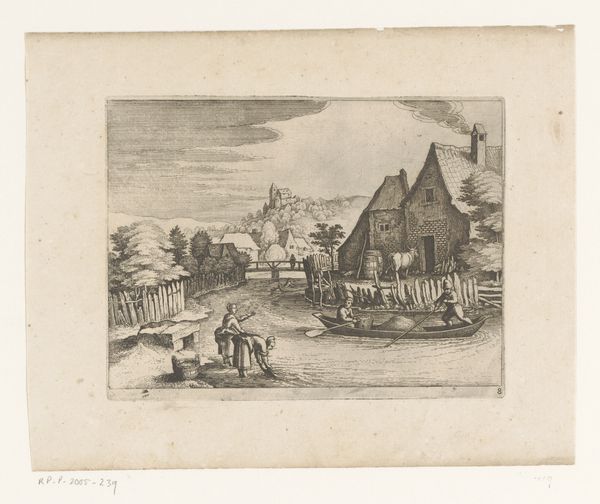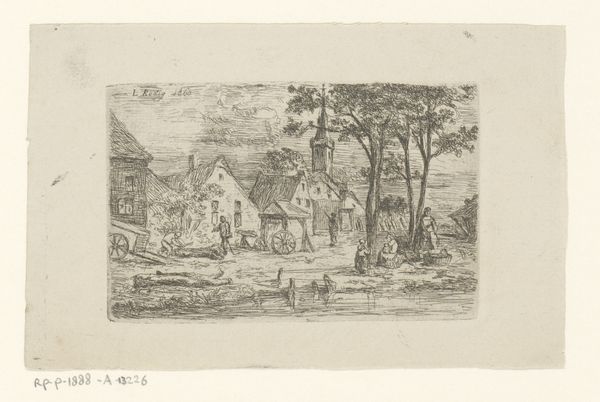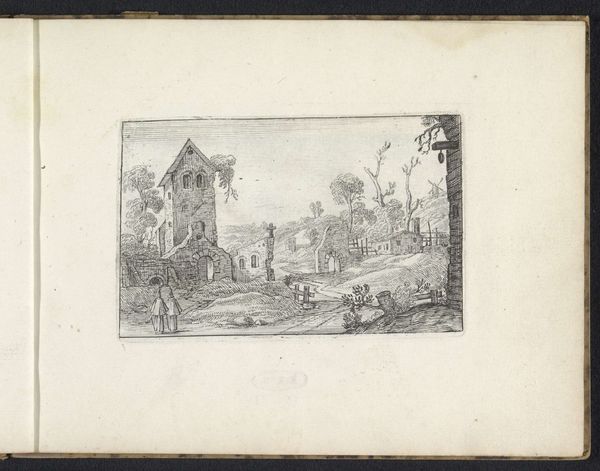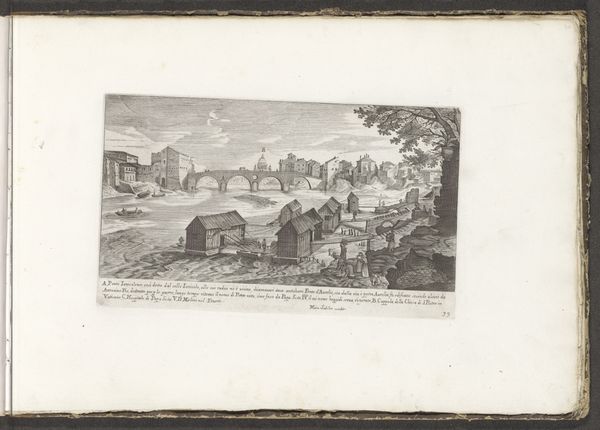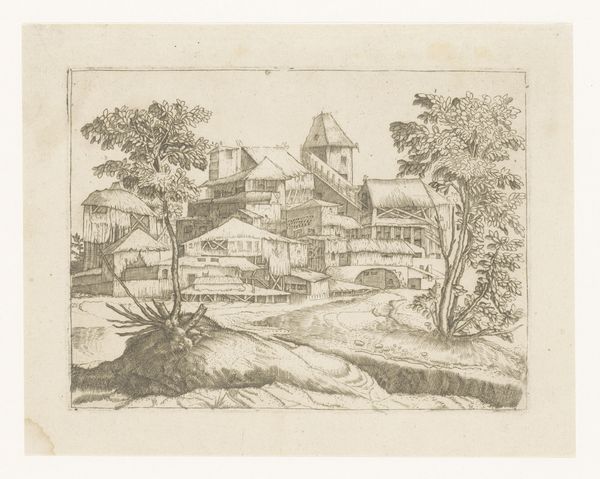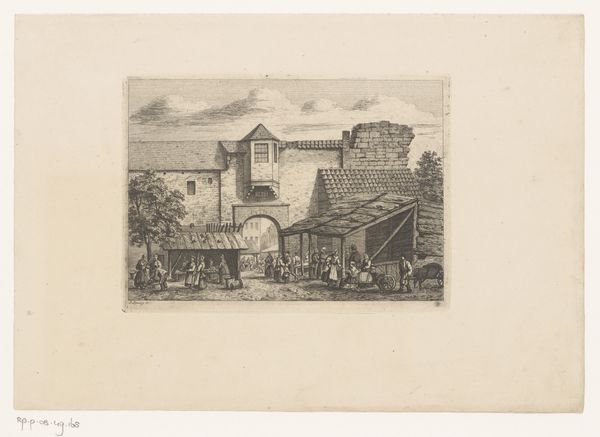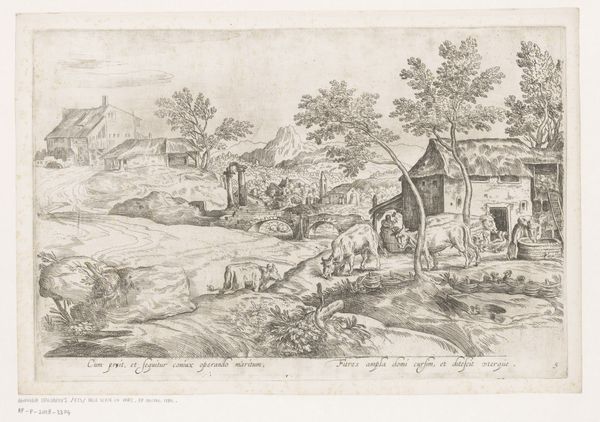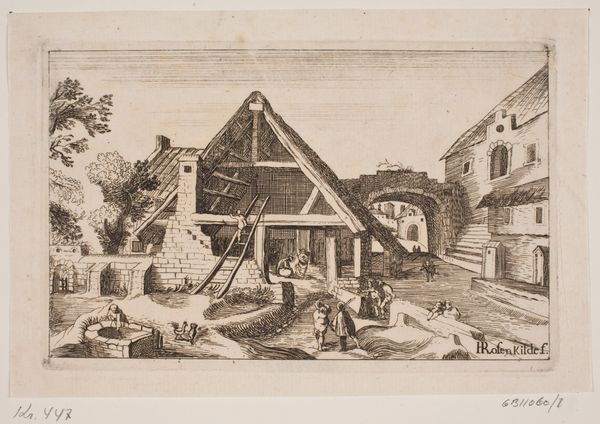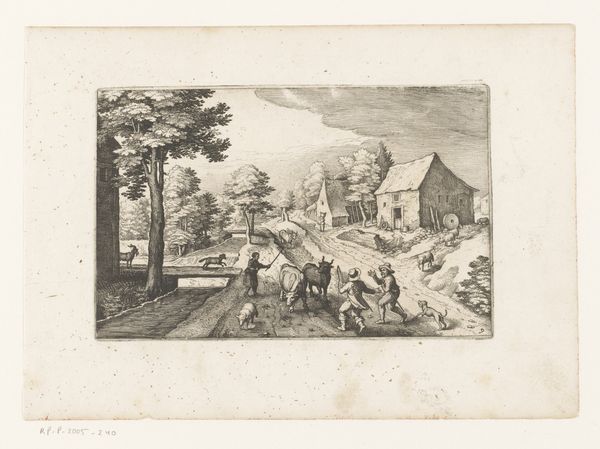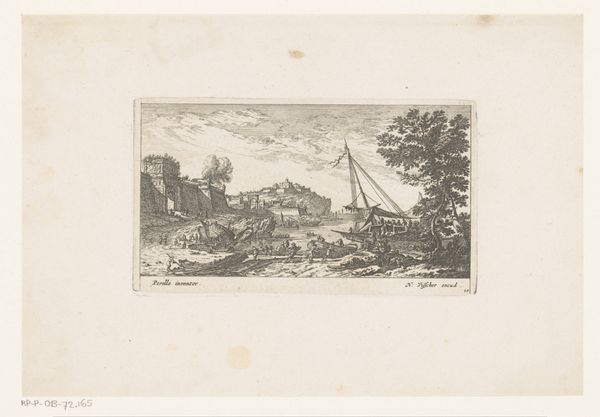
print, etching
#
baroque
#
dutch-golden-age
# print
#
etching
#
landscape
#
genre-painting
Dimensions: height 184 mm, width 285 mm
Copyright: Rijks Museum: Open Domain
Curator: This etching, "Village with Winemakers and Cattle," by Matthäus Merian, gives us a glimpse into 17th-century rural life. It dates from around 1603 to 1650. Editor: It strikes me as a surprisingly lively and industrious scene, though rendered with such fine lines, almost delicate despite the busy subject matter. Curator: Indeed. Merian was a master of etching, and here you can appreciate his command of the medium. The various lines denote tonal value which adds real depth. And the scene speaks volumes about the labor inherent in both agriculture and the crafts associated with it. Look at how he details the steps of wine production in the foreground, or how the cattle were vital to the farming life in the Dutch Golden Age. Editor: I am struck by this depiction of labour and communal life. You see it, perhaps most obviously, in the wine press on the right, with multiple figures engaged in production. Wine at the time wasn't merely leisure; it was tied to local and class identity, as well as economy and production in villages of the period. The way he has detailed the animals that graze in the meadows show how life revolved around their nurture. And did I mention children sitting by those containers! Curator: Precisely. The entire community seems engaged in different aspects of survival. Think too, how reliant the winemakers were on the coopers crafting the barrels. And how different specialists are bound by materials and economics. It really captures a complete circle of village industry! Editor: And it’s not just labor in an abstract sense; consider the social relations imbued into each character’s position here— who is tending the livestock, or helping with the harvest and the means to the product being made at the mill? These all hint towards socioeconomic roles prevalent at the time. Also how the winemaking industry had intersectional roots through labour divisions of gende, for example! Curator: It is important to notice what Merian does and does not depict. As much as we glean how village communities subsisted back then, the reality behind their labour during that epoch is certainly open for deeper discussion. Editor: Exactly. What seems to be a mundane illustration contains within itself broader insight on historical forces that dictated our present times. Curator: Indeed, there are numerous levels on which one can look at this remarkable work, each layering another onto our understanding of Merian’s vision and intention. Editor: It has prompted me to see it from angles I hadn’t considered before, from a position rooted within labour practices of this Dutch Golden Age genre.
Comments
No comments
Be the first to comment and join the conversation on the ultimate creative platform.
